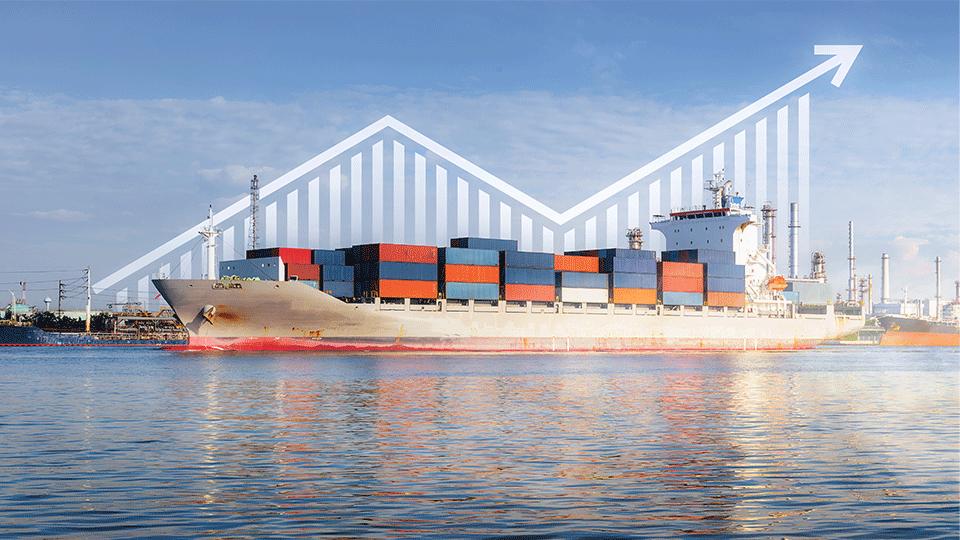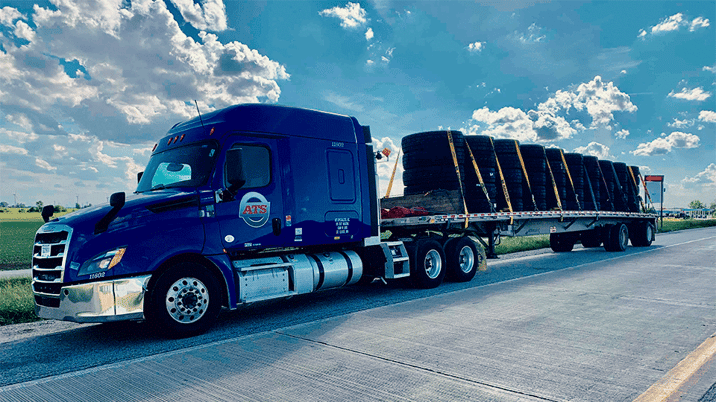
Every well-established business is intimately familiar with its predictable high and low periods — its market cycles.
These cyclical industry shifts are spurred by widespread changes to the supply and demand of a product or service. Although these changes impact every industry stakeholder, they most noticeably affect consumers by modifying the prices they pay.
The transportation industry, like many others, is cyclical and sensitive to change. While the transportation marketplace doesn’t see extreme shifts hyper-frequently, when they do happen, it can be frustrating for shippers.
Anderson Trucking Service (ATS) has been a full-service transportation company since 1955, so we've weathered a fair few market cycles in our time. We know how to anticipate the peaks and valleys of the market, and are passionate about helping shippers do the same.
To help you understand the causes and business implications of each market cycle, this article will do the following:
- Explain the major transportation industry market cycles
- Clarify what each market cycle means for shippers
- Outline what causes each cycle to occur
You'll come away better prepared to make more confident, market-informed logistics decisions in the future. Let's get started!
What Are the Common Transportation Industry Market Cycles?
Transportation spot rates are nothing if not dynamic. The going price of transportation services can fluctuate overnight, causing the rate you received one day to expire by the next.
These tweaks to spot rate pricing can be attributed to changes in supply and demand in your freight’s origin and destination locations.
Commonly referred to (by transportation companies) as a load-to-truck ratio, the balance between the number of shipments in need of transport in an area and the quantity of viable options for moving them drives the cost of shipping freight.
This story — a perfect representation of microeconomics — rings true on a variety of scales in every marketplace. The transportation industry is no exception.
The common U.S. transportation-industry market cycles are the result of wide-scale changes to the symmetry of supply and demand in this marketplace.
In a rinse-and-repeat-like fashion, this industry cycles through two distinct periods:
1. Supply-Rich Periods
These occur when the national supply of transportation solutions and service providers exceeds the overall market demand for transportation services.
2. Demand-Rich Periods
You’ll experience this when the national supply of transportation solutions and service providers falls short of the market’s demand for these services.
What Does Each Market Cycle Mean for Shippers?
When the U.S. transportation market switches from one cycle to the next, the costs associated with securing a solution at that time adjust accordingly. Supply-rich periods place more bargaining power in the hands of the consumer (shippers), lowering rates. The opposite is true of demand-rich periods which drive up freight rates and leave transportation providers flush with profits.

What Causes the Transportation-Industry’s Market Cycles?
Any time an endless interchange between two distinct, yet related, outcomes exist, you’re kind of left wondering which came first — a classic “chicken-and-the-egg” scenario.
The trade-off in the transportation industry between the demand- and supply-rich cycle is like this. About every 2-4 years, the transportation market swings between these periods.
Here’s why this happens:
When the demand for capacity is higher than its supply, spot rates rise.
Rising spot rates are great for transportation companies, lining their balance sheets with liquidity. In turn, these periods present the opportunity for transportation companies to gain market share by spending their profits on assets like trucks, trailers and equipment.
This is also when more drivers enter the industry, looking to capitalize on the higher pay that often accompanies these periods. Usually, when rates get high enough, you’ll see more one-truck owner-operators in the marketplace during these periods as well.
Transportation is a fragmented industry — the majority of shipments are hauled by companies with fewer than 50 trucks. This fragmentation, coupled with transportation’s relatively low barriers to entry, makes it incredibly competitive.
Since no one knows when equilibrium will return, competition during peak demand periods skyrockets as companies exercise their right to expand. This tends to last 9-12 months on average.
 Eventually, however, a shift occurs in the supply-demand curve. After a time, typically due to changes in economic activity, the supply of transportation solutions over-saturates the marketplace. This places the bargaining power into the hands of companies with goods to ship once again.
Eventually, however, a shift occurs in the supply-demand curve. After a time, typically due to changes in economic activity, the supply of transportation solutions over-saturates the marketplace. This places the bargaining power into the hands of companies with goods to ship once again.
With fewer opportunities to keep their trucks moving and productive, carriers jostle against one another to win business, driving rates down. This trend continues until economic activity (rising GDP, higher consumer spending, etc.) swings demand back into prominence.
And so, another demand-rich period begins . . .
Be Prepared for the Next Market Cycle
In the year ahead, there will undoubtedly be changes to your freight rates — though where they'll go long-term is anyone’s guess.
The best way to cycle-proof your company's transportation supply chain is to use a good mix of providers — incorporate the 80/20 strategy if you haven’t already. This will help insulate you from significant issues when the going gets tough for transportation businesses.
Here at ATS, we take pride in making shipping easy so you can look good in front of your customers, regardless of which market cycle we’re in.
Our 2025 Freight Shipping Calendar highlights the best (most cost-effective) and worst (most expensive) shipping days each month. Download it and use it as a tool to optimize your freight movements and become the supplier that always delivers.




